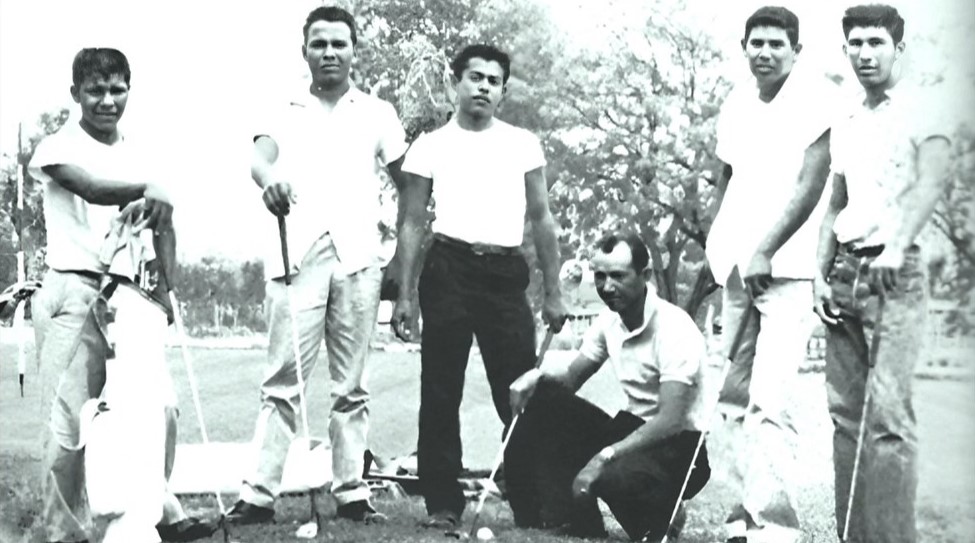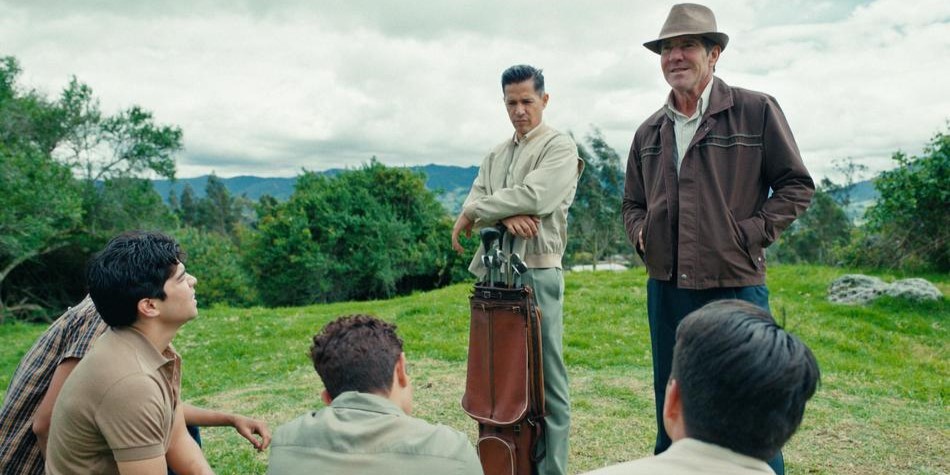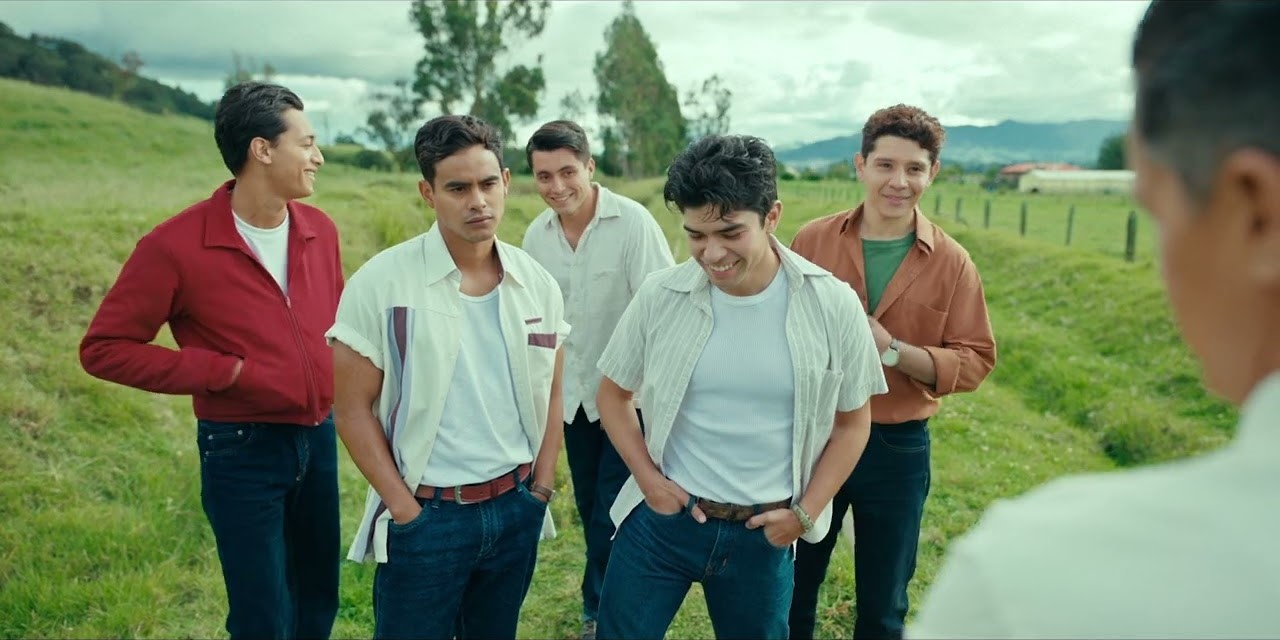Under the direction of Julio Quintana, ‘The Long Game’ takes us back to the 1950s, through the journey of a Mexican-American golf team striving to compete at the state championship while facing racism, family expectations, and bad sportsmanship. JB Peña is a World War II veteran with a passion for golf but is denied membership in the Del Rio Country Club for having Mexican roots. Peña is the superintendent at San Felipe High School and comes across a group of Hispanic students who work as caddies at the club, practicing golf in their free time.
Hoping to change the club’s mindset about Mexican-Americans, Peña creates a school golf team with the boys and coaches them alongside his war buddy, Frank Mitchell. Hardworking and free-spirited, the team, named the Mustangs, improves fast, practicing on a self-made course and sneaking onto the club grounds at night. As the underdog team begins to achieve what no one thought possible, questions arise regarding the historical accuracy of the sports movie.
The Long Game is Based on the True Story of the San Felipe Mustangs
The long-forgotten story of the San Felipe Mustangs was brought to light by Humberto G. Garcia’s 2010 novel ‘Mustang Miracle. ‘The Long Game’ is based on the non-fiction novel, adapted for film by writers Jennifer C. Stetson, Paco Farias, and Julio Quintana. They’ve made minor changes to the real story, with some events and characters added in for dramatic effect. However, the vast majority of the film follows the real-life timeline.

It all began with Felipe Romero, Guadalupe Felan, Gene Vasquez, Joe Trevino, and Mario Lomas caddying for the Del Rio Country Club and learning to play by observing the club members. Hailing from immigrant families, the boys lived in extreme poverty and endured a discriminatory and segregated society. While working as caddies, the boys’ enthusiasm for the sport prompted kindhearted golfers to gift them their old equipment. They would also find old golf clubs around the country club grounds, collecting and sharing the collected kit among themselves to practice. Since they did not have access to any golf courses as players, the group began making their own.
The film spends little time focusing on the rudimentary golf course that the team had built with their own hands, starting off with one hole, and working their way up, carving nine holes in the southwest Texas scrubland. This in itself was a monumental feat, showing the boys’ love for the game before they ever had a chance to play on a professional course. Looking upon their glorious creation, they termed their work the El Llanito Country Club, a sarcastic moniker. The harsh physical conditions they faced while practicing on their course made the players resilient and persistent, a quality that would set them apart from their competitors.
Talking about their early days of learning golf, 83-year-old Gene Vasquez said in an interview, “We were fighting brutal poverty and brutal discrimination. Our parents were migrants, they were illiterate, and we were very poor.” He continued, “So to us, this was very exciting because we could enjoy caddying, making a little money, and learning how to play golf by mimicking the golfers. And then we got an idea, let’s make our golf course. We started gathering all the equipment, and we started swinging.”
Just as seen in the film, JB Peña, San Felipe High School’s superintendent, observed the boys playing on their own course and was thoroughly impressed. A golf lover himself, Peña was encouraged by a close friend, Hiram Valdes, to start a golf team for his school with the boys. And thus, the San Felipe Mustangs came together. To coach the team, Peña had the help of Valdes, a civil service aircraft mechanic at nearby Laughlin Air Force Base. Valdes was very supportive of the team and financed much of their trips and expenses.

In the film, Hiram Valdes is replaced with the character of Frank Mitchell. Additionally, the poverty of the players and the racism levied against them was likely downplayed in the movie. The real-life team members could not afford the team jerseys they are shown donning in the film and played in plain white shirts and jeans. Moreover, as per publically available information, there is no record of Hiram Valdes and JB Peña serving in World War II, and neither is it mentioned in the sourcebook. The war veterans subplot was likely created by the film’s writers to accentuate the commentary on the American Dream.
When the team began to compete in school tournaments, they exceeded expectations and won the district and regional tournaments in their inaugural year. They reached the state championship in Austin and managed to place second, only three strokes behind the winning team from Ranger. Their skills honed on the rough terrain of El Llanito had paid dividends, alongside the coaching and refinement from Peña and Valdes. Their unexpected performance actually led to members of the Del Rio Country Club lobbying the institution to allow them access to its golf course.
Based on their merits, the club allowed the team to practice on its grounds on Mondays, when it was closed, albeit with the clause of cleaning up as they played. This development was omitted from the film, likely to create a greater underdog feel leading up to the finale.
“Going from El Llanito to an actual golf course was like going from the desert to paradise,” said Felipe Romero. In their second year playing, having had regular weekly access to the facilities of the Del Rio, the Mustangs blew away everyone’s expectations once more. They won the state championship by a wide margin, beating the runner-ups with a combined 35 strokes. As seen in the movie, Joe Trevino was the team’s top performer, and Romero was the silver medalist. Not only did the ill-equipped Mustangs beat the privileged players who had grown up around clubs, but they also set a state record that would remain unbeaten for decades to come.
Unfortunately, they were not treated well in their victory, and no award ceremony was held for them. Their celebrations were private and truly began after returning to Del Rio, where they were hailed as champions. The record-breaking incident was barely covered in news publications, and the story of their triumph was soon lost within a few pages of history.
In 2008, a Del Rio-born San Antonio attorney, Humberto Garcia, competed in a golf tournament at the San Felipe Country Club. The tournament was a part of the reunion for San Felipe students. In the award ceremony, the emcee introduced the members of the 1957 Mustangs, revealing their historic win of the state championships. Garcia, who was there as a part of the class of ’72, was stunned. He had not heard of the school winning the state championships and made up his mind to dig deeper. After interviewing the players and digging through news archives for four years, Garcia found very little media on the topic and wrote his book, ‘Mustang Miracle.’

‘The Long Game’ is based on the astonishing true story of San Felipe Mustangs, which is less about golf and more about the monumental achievements of humble players against all odds. The narrative remains authentic to its core events in history and uses its setting to create a discourse on belonging, the slow shifts in stigma, and the qualities inherent in champions.
Read More: Best True Story Movies on HBO Max


You must be logged in to post a comment.